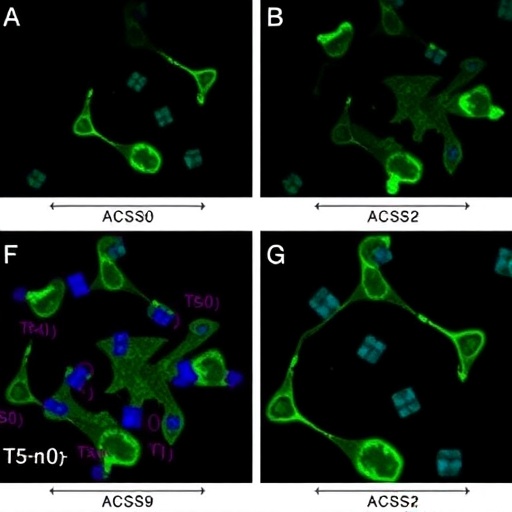ANRS 12286 MOBIDIP(1), a clinical trial running in parallel in three countries in sub-Saharan Africa (Cameroon, Burkina Faso, and Senegal), shows that dual therapy with lamivudine and a boosted protease inhibitor is effective as second-line treatment in patients infected by HIV with multiple mutations. Such treatment de-escalation will reduce costs, side effects, and the need for virological monitoring of patients. The results of this study, led by Laura Ciaffi (TransHIVMI; Inserm-IRD-Université de Montpellier) and Sinata Koulla-Shiro (ANRS site -Cameroon), is published in The Lancet HIV on May 28, 2017.
Second-line treatments of HIV infection recommended by the WHO for resource-limited countries are highly effective. However, there is currently no reliable way of de-escalating these treatments, while maintaining an undetectable viral load. Two strategies may provide a solution. The first is monotherapy with a boosted protease inhibitor (BPI), which in several trials has already yielded encouraging results, albeit with a risk of increased viral load. Such an increase constitutes a risk in resource-limited countries because patients there do not have access to regular virological monitoring, which can identify treatment failure. The second strategy is to combine a BPI with lamivudine, which is inexpensive, well tolerated, often used first line, and effective. This combination, however, has never been evaluated in patients infected by HIV with mutations that confer drug resistance, notably to lamivudine (M184V). ANRS 12286 MOBIDIP is the first trial to compare these two treatment de-escalation strategies in resource-limited countries, in patients with viremia controlled by second-line treatment.
ANRS 12286 MOBIDIP: assessing the efficacy of a new therapeutic strategy
ANRS 12286 MOBIDIP was led from 2014 and 2016 by Laura Ciaffi of TransHIVMI (joint Inserm-IRD-Université de Montpellier research unit, directed by Eric Delaporte of IRD/Université de Montpellier) and Sinata Koulla-Shiro (ANRS site – Cameroon) and her colleagues in 3 countries of sub-Saharan Africa (Cameroon, Burkina Faso, and Senegal). The study's 265 patients(2) had an initial viral load below 200 copies/mL, and were followed up for 96 weeks. The main purpose of ANRS 12286 MOBIDIP was to compare the failure rates of the two therapeutic strategies: monotherapy and dual therapy. Half the study patients received BPI treatment and the other half were given BPI plus lamivudine. After 48 weeks of treatment, monotherapy was interrupted and the patients resumed triple drug therapy. The patients on dual therapy continued their treatment till week 96.
Efficacy of dual therapy including lamivudine
The rate of treatment failure, defined as a viral load above 500 copies/mL, was 3% (4/132 patients) for dual therapy and 24.8% for monotherapy (33/133 patients). CD4 cell count increased greatly in the patients on dual therapy (65 versus 12 cells/mm3), indicating increased immune defense. Overall, both treatments were well tolerated by the patients.
ANRS 12 286 MOBIDIP has provided the first evidence of the efficacy of de-escalated second-line therapy, which is less costly and better tolerated than triple-drug therapy in patients infected by HIV with multiple mutations. This dual therapy combining BPI and lamivudine could be appropriate in resource-limited countries with economic and virological monitoring constraints. Moreover, the use of lamivudine, which is already used in first-line treatment, could avoid the switch to another class of drugs, which could be prescribed later if necessary.
###
(1) Evaluation of a maintenance strategy using protease inhibitor with or without lamivudine in patients in Africa (Yaoundé, Bobo-Dioulasso, Dakar) with a viral load controlled by second-line antiretroviral therapy
(2) These patients were from ANRS 12169 2LADY (comparative trial of second-line triple drug therapies).
Reference
Boosted protease inhibitor monotherapy versus boosted protease inhibitor plus lamivudine dual therapy as second line maintenance treatment in HIV-1 infected patients in Sub Saharan Africa (ANRS12 286/MOBIDIP): a randomized, controlled, open-label superiority trial. Laura Ciaffi1, Sinata Koulla-Shiro2, Adrien Sawadogo3, Cheik Tidiane Ndour4, Sabrina Eymard-Duvernay1, Pretty Rosereine Mbouyap2, Liliane Ayangma5, Jacques Zoungrana3, Ndeye Fatou Ngom Gueye6, Mohamadou Diallo4, Suzanne Izard1, Guillaume Bado3, Coumba Toure Kane7, Avelin Aghokeng1,8, Martine Peeters1, Pierre Marie Girard9, Vincent Le Moing1, Jacques Reynes1, Eric Delaporte1 for the MOBIDIP Study Group. The Lancet HIV, 28 may 2017. 1IRD UMI 233 – INSERM U1175 – Montpellier University, Montpellier France, 2ANRS Research Centre Cameroon, Central Hospital, Yaoundé Cameroon, 3Day Care Center, University Hospital Souro Sanou, Bobo Dioulasso Burkina Faso, 4Research and Training Center (CRCF), Fann University Hospital, Dakar Senegal, 5Ambulatory Treatment Center, Military Hospital, Yaounde Cameroon, 6Day Care Center, Fann University Hospital, Dakar Senegal, 7CHU A Le Dantec Laboratoire de Bactériologie-Virologie Dakar, Sénégal 8Virology laboratory IMPM-IRD Centre de Recherche sur les Maladies Emergentes, Yaounde Cameroon, 9Department of Infectious and Tropical Diseases, Saint-Antoine Hospital, AP-HP INSERM UMR S 1136, Paris France
Scientific contact
Éric Delaporte
Email : [email protected]
Press contacts ANRS
Marie Christine Simon
[email protected]
Nolwenn Plusquellec
+33 (0)1 53 94 80 63 – [email protected]
Press contact IRD
Cristelle Duos
[email protected]
Press contact Inserm
Séverine Ciancia
[email protected]
Media Contact
http://www.anrs.fr
############
Story Source: Materials provided by Scienmag




